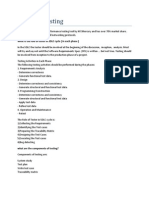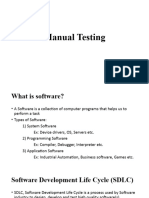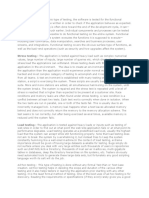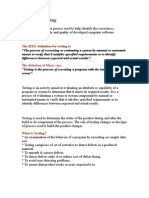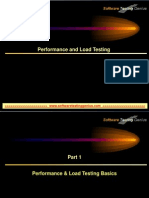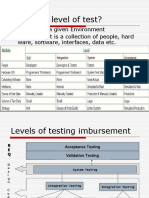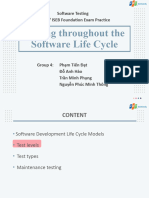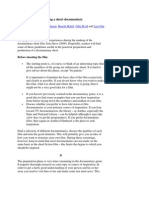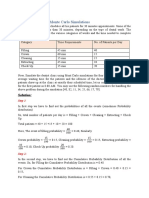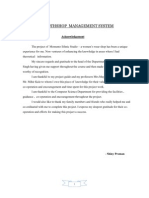0% found this document useful (0 votes)
81 views22 pagesSoftware Testing Types
The document discusses different types of software testing including system testing, recovery testing, security testing, load and stress testing, usability testing, localization/globalization testing, compatibility testing, installation testing, and alpha and beta testing. It provides details on the purpose and process for each type of testing. Key points covered include testing system integration, recovery procedures, security protections, application performance under varying loads, user experience, cultural adaptations, compatibility across environments, and installation/uninstallation functionality.
Uploaded by
suranjitbaralCopyright
© Attribution Non-Commercial (BY-NC)
We take content rights seriously. If you suspect this is your content, claim it here.
Available Formats
Download as PPT, PDF, TXT or read online on Scribd
0% found this document useful (0 votes)
81 views22 pagesSoftware Testing Types
The document discusses different types of software testing including system testing, recovery testing, security testing, load and stress testing, usability testing, localization/globalization testing, compatibility testing, installation testing, and alpha and beta testing. It provides details on the purpose and process for each type of testing. Key points covered include testing system integration, recovery procedures, security protections, application performance under varying loads, user experience, cultural adaptations, compatibility across environments, and installation/uninstallation functionality.
Uploaded by
suranjitbaralCopyright
© Attribution Non-Commercial (BY-NC)
We take content rights seriously. If you suspect this is your content, claim it here.
Available Formats
Download as PPT, PDF, TXT or read online on Scribd
/ 22














